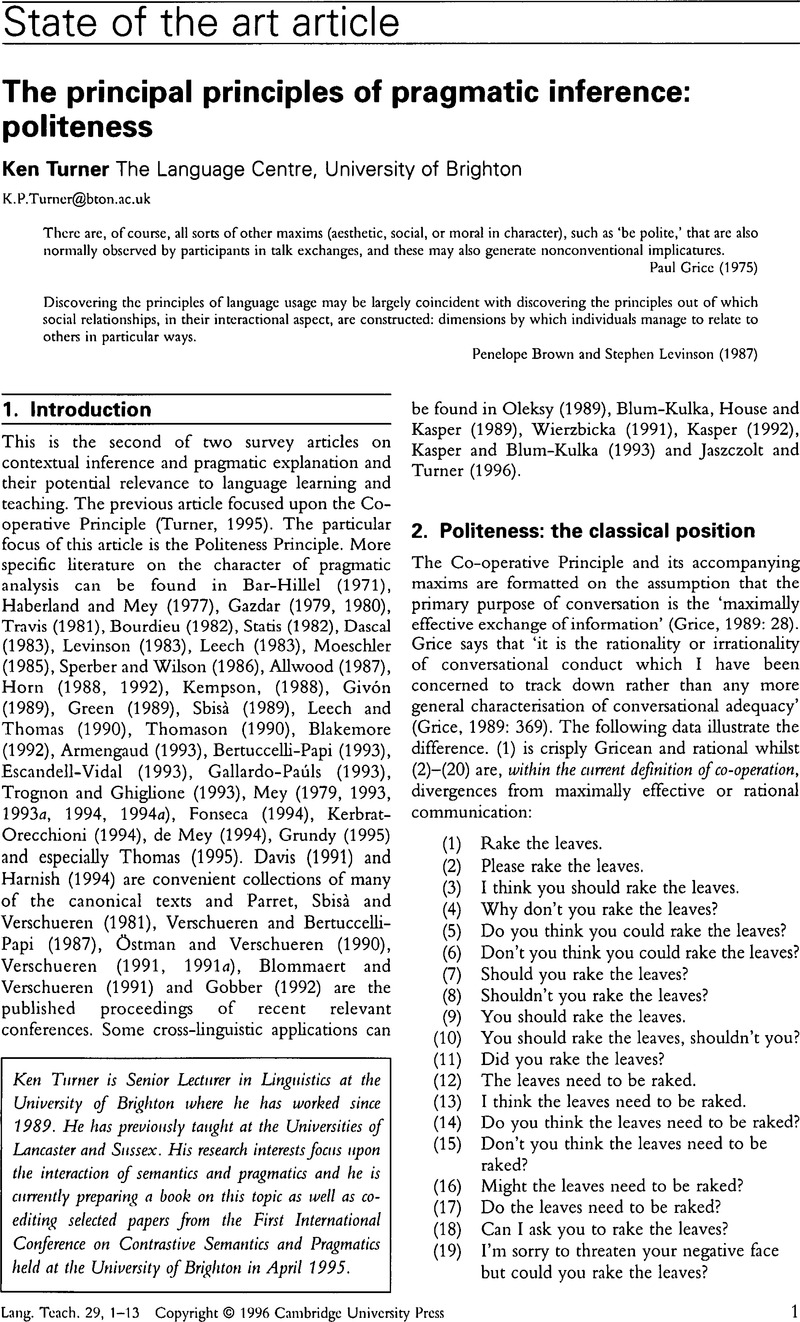Crossref Citations
This article has been cited by the following publications. This list is generated based on data provided by Crossref.
1996.
Introduction.
Language Sciences,
Vol. 18,
Issue. 1-2,
p.
1.
Culpeper, Jonathan
Bousfield, Derek
and
Wichmann, Anne
2003.
Impoliteness revisited: with special reference to dynamic and prosodic aspects.
Journal of Pragmatics,
Vol. 35,
Issue. 10-11,
p.
1545.
Binchy, James
2005.
The Pragmatics of Irish English.
p.
313.
Bousfield, Derek
2005.
Saeko Fukushima, Requests and Culture: Politeness in British English and Japanese, Peter Lang, Bern, 2000, 315 pp., £30, paperback, ISBN 3 906765 30 X.
Journal of Pragmatics,
Vol. 37,
Issue. 7,
p.
1117.
Haugh, Michael
2005.
The Importance of “Place” in Japanese Politeness: Implications for Cross-Cultural and Intercultural Analyses.
Intercultural Pragmatics,
Vol. 2,
Issue. 1,
Terkourafi, Marina
2011.
The puzzle of indirect speech.
Journal of Pragmatics,
Vol. 43,
Issue. 11,
p.
2861.
Kim, Hye-Jeong
2011.
A Pragmatic Study of Conversations in Movies and Textbooks.
STEM Journal,
Vol. 12,
Issue. 1,
p.
3.
Chang, Wei-Lin Melody
and
Haugh, Michael
2011.
Strategic embarrassment and face threatening in business interactions.
Journal of Pragmatics,
Vol. 43,
Issue. 12,
p.
2948.
Bella, Spyridoula
2012.
Pragmatic development in a foreign language: A study of Greek FL requests.
Journal of Pragmatics,
Vol. 44,
Issue. 13,
p.
1917.
Defibaugh, Staci
2014.
Management of care or management of face: Indirectness in Nurse Practitioner/patient interactions.
Journal of Pragmatics,
Vol. 67,
Issue. ,
p.
61.
Terkourafi, Marina
2015.
Conventionalization: A new agenda for im/politeness research.
Journal of Pragmatics,
Vol. 86,
Issue. ,
p.
11.
2016.
Requests in American and British English.
Vol. 265,
Issue. ,
Terkourafi, Marina
2022.
Frames for politeness.
Pragmatics. Quarterly Publication of the International Pragmatics Association (IPrA),
p.
97.
Bella, Spyridoula
2022.
Length of residence and intensity of interaction.
Pragmatics. Quarterly Publication of the International Pragmatics Association (IPrA),
p.
1.


